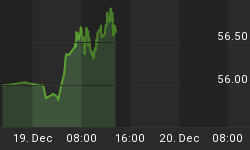As a general rule, the most successful man in life is the man who has the best information.
Current global leaders in advanced electric vehicle batteries are based, for the most part, in Asia.
President Obama made global warming one of the main planks in his election platform. Included in his Clean Energy Agenda were pledges to eliminate oil imports from the Middle East and Venezuela within a decade and to slash his country's carbon dioxide emissions by more than 30 per cent by the year 2020.
I wrote the following early in 2009;
"Lithium battery technology is absolutely critical to President Obama's energy plan. Lithium-ion is the leading battery technology and a hugely important first step towards transforming electric cars from a niche curiosity into a major clean energy revolution for the transportation sector.
Lithium batteries could be part of the answer to increasingly expensive oil, energy dependence on foreign suppliers and global warming. Now, with the big push to renewable energy and far less reliance on fossil fuels, a market is starting to develop in the United States for more advanced batteries. This, combined with loan guarantees, will act as an incentive that could very well jumpstart the advanced battery industry in the US."
The Obama administration tagged $1.5 billion of the $2.4 billion in electric technology development funds for battery manufacturing projects and in a direct response to the Gulf oil spill asked (late June 2010) Congress for an additional $6 billion.
"I don't want to have to import a hybrid car, I want to build a hybrid car here." ~ President Obama
Obama has put taxpayer's money where his mouth is - this huge and continuing investment has placed the US on track towards becoming the globe's major supplier of advanced batteries for plug-in vehicles. This mountain of taxpayer's money has helped to finance 26 of the 30 electric-vehicle battery and component plants now under construction - this includes nine lithium-ion battery manufacturing plants of which four are expected to be producing batteries by year's end.
The US Department of Energy has said that those 30 factories, by 2012, could have enough capacity to supply 20 percent of the worlds advanced battery needs and furthermore that their share of the world market could rise to 40 percent by 2015.
There's billions and billions of dollars, courtesy of the government's stimulus package, still to come for advanced battery technology R&D companies and battery manufacturers. The auto industry is gearing up to make its first real go at marketing plug-in vehicles for the masses. The start flag has dropped and the race to build lithium-ion batteries for vehicles has started.
The consulting firm Pike Research estimates the global market for lithium-ion batteries could grow from $877 million in 2010 to $8 billion by 2015 - they also expect the North American market to expand from $287 million this year to $2.2 billion in 2015.
A March 2010 report issued by Deutsche Bank says "We continue to believe that the market underestimates the potential for growth in this segment.....we've noted evidence of steeper than-expected battery price declines which will likely bolster the consumer value proposition and potentially lead to stronger demand than we originally envisioned."
Deutsche Bank's report also claims automakers are seeing bids for $450 per kWh from battery companies for delivery contracts in the 2011/2012 time frame. They also predicted an additional 25% decline in price over the next 5 years and a 50% decline over the next 10 years along with a doubling of performance over the next 7 years.
Conclusion
Electric vehicles (EVs) have far fewer moving parts than Internal Combustion Engine (ICE) gasoline-powered cars - they don't have mufflers, gas tanks, catalytic converters or ignition systems, there's also never an oil change or tune-up to worry about getting done. Plug and go, pretty convenient and very green!
But the clean and green doesn't end there - electric drives are more efficient then the drives on ICE powered cars. They are able to convert more of the available energy to propel the car therefore using less energy to go the same distance. And applying the brakes converts what was simply wasted energy in the form of heat to useful energy in the form of electricity to help recharge the car's batteries...
The first DVD players, the first flat panel widescreen TV's, the first production runs of any advanced technology are always more expensive than later unit costs will be. That is a fact, but this author believes that Hybrid and fully Electric Vehicle prices will soon be very affordable and offer cost advantages over their polluting gas guzzling ICE second cousins.
But the real story behind all electric vehicles is that they are totally emission free.
The rechargeable power needs of our modern society has made lithium a serious player in the commodity markets. Lithium miners should be on every investors radar screen.
Are they on yours?
If you're interested in learning more about specific lithium juniors and the junior resource market in general please come and visit us at www.aheadoftheherd.com. Membership is free, no credit card or personal information is asked for.















